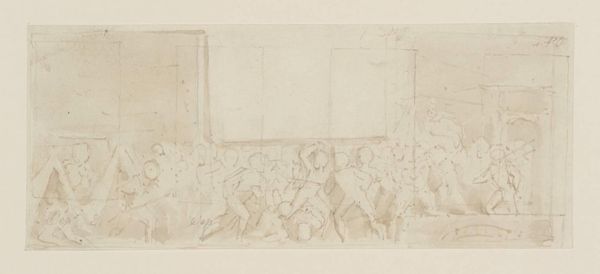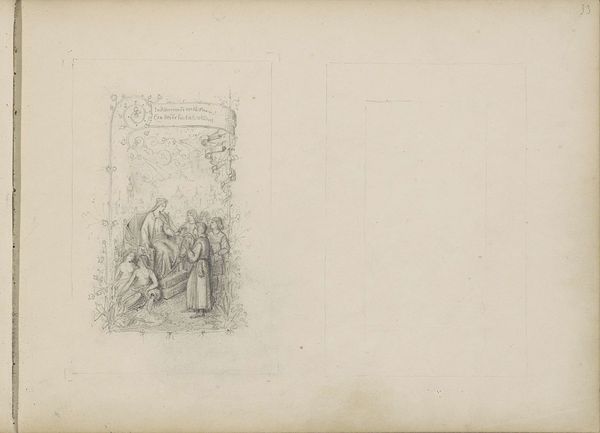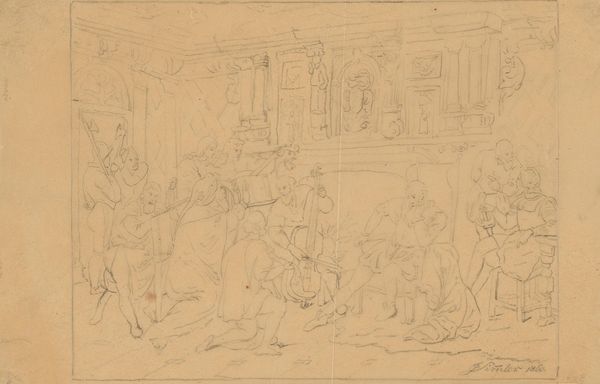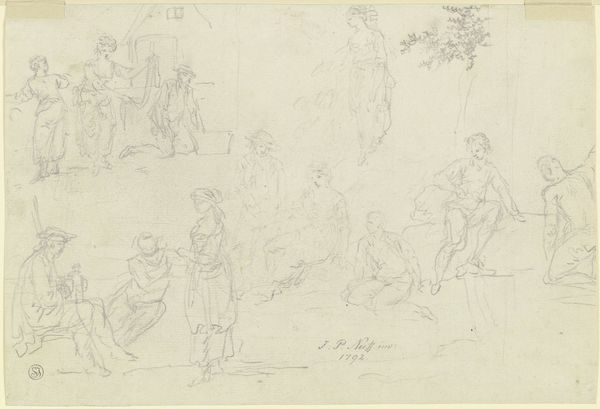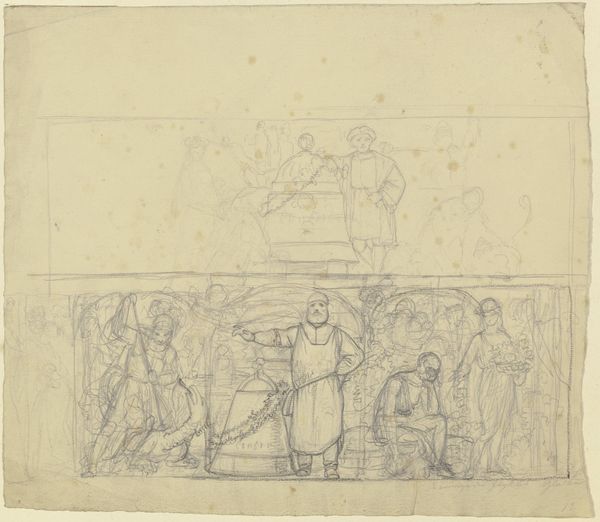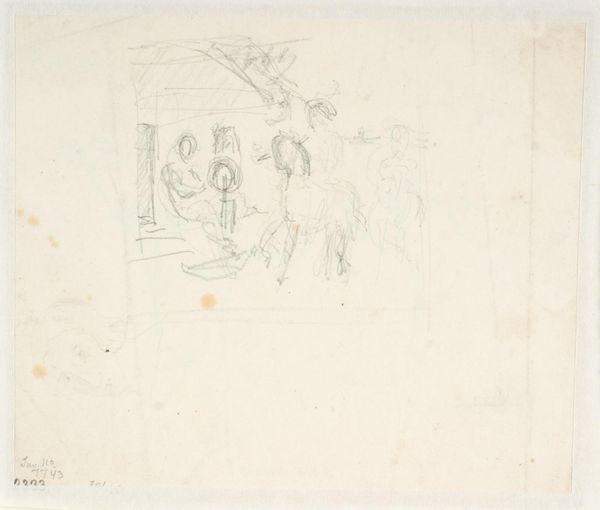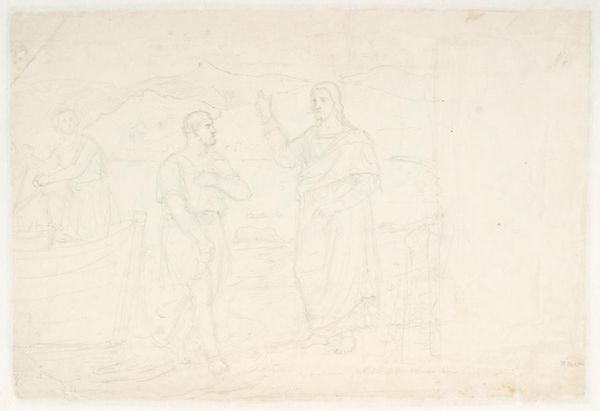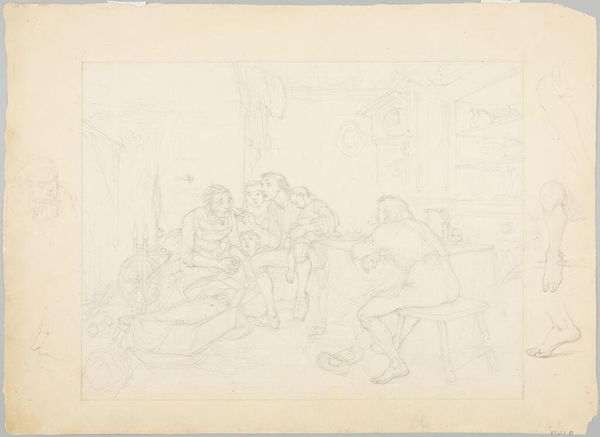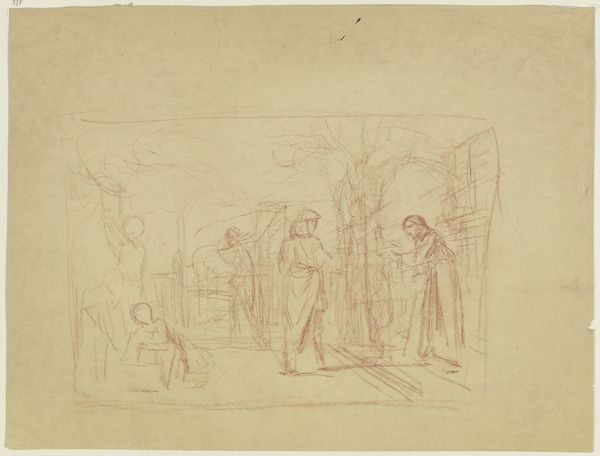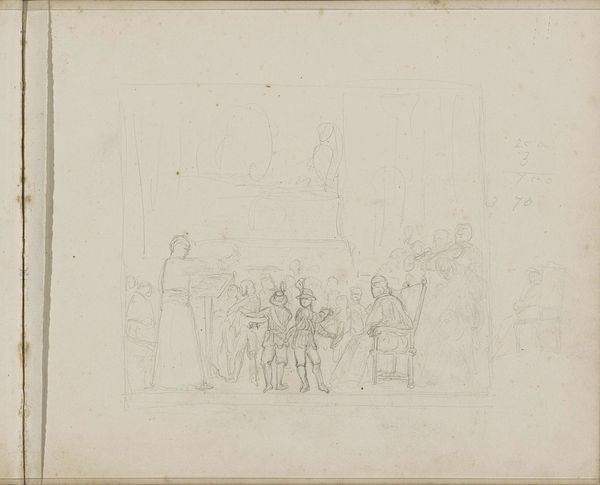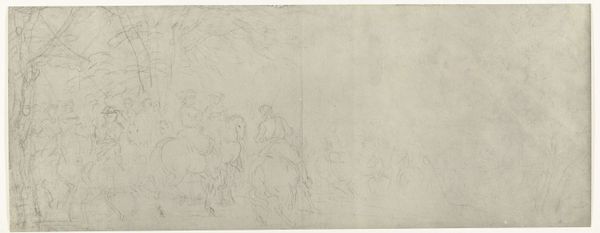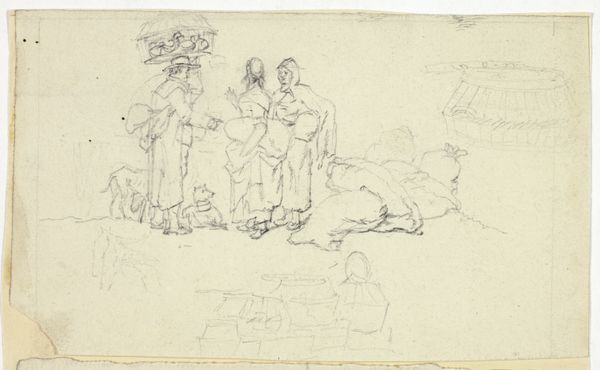
drawing, pencil
drawing
ink drawing
pencil sketch
etching
figuration
pencil
history-painting
academic-art
Dimensions: 289 mm (height) x 235 mm (width) (bladmaal)
Curator: Let’s discuss Lorenz Frølich’s “Tre figurkompositioner,” a pencil drawing from 1860. Editor: Right. It's…tentative. You can almost see the artist thinking through the scenes, different arrangements on one page. I’m curious, given it’s just a pencil sketch, what can we really glean from it? Curator: Precisely. Look at the surface, the paper. Its quality, its likely source – where and how would Frølich obtain this specific type of paper in 1860s Denmark? Was it mass-produced, hinting at a broader accessibility of artistic materials? The pencil itself also speaks to the means of production. Was it locally made, or imported? Its hardness affects the resulting sketch, suggesting choices about the ease of use and desired level of detail. Editor: So, thinking about the actual materials opens up avenues of inquiry about the economic and social circumstances. Curator: Exactly. These choices reveal the systems in which Frølich was operating and their effect on art production. Furthermore, consider what isn't fully realized in the sketch. Where does the academic "high art" tradition intersect (or clash) with the inherent, rough materiality of the pencil lines? Editor: I see what you mean. The drawing is not only a vehicle for depicting a historical scene, but also a document of the means and mode of its production. It makes me reconsider how "finished" a piece of art has to be to carry significant meaning. Curator: Agreed. We gain crucial knowledge by examining how the artistic tools at the time were distributed. Ultimately, we need to acknowledge labor that results in the artworks.
Comments
No comments
Be the first to comment and join the conversation on the ultimate creative platform.


